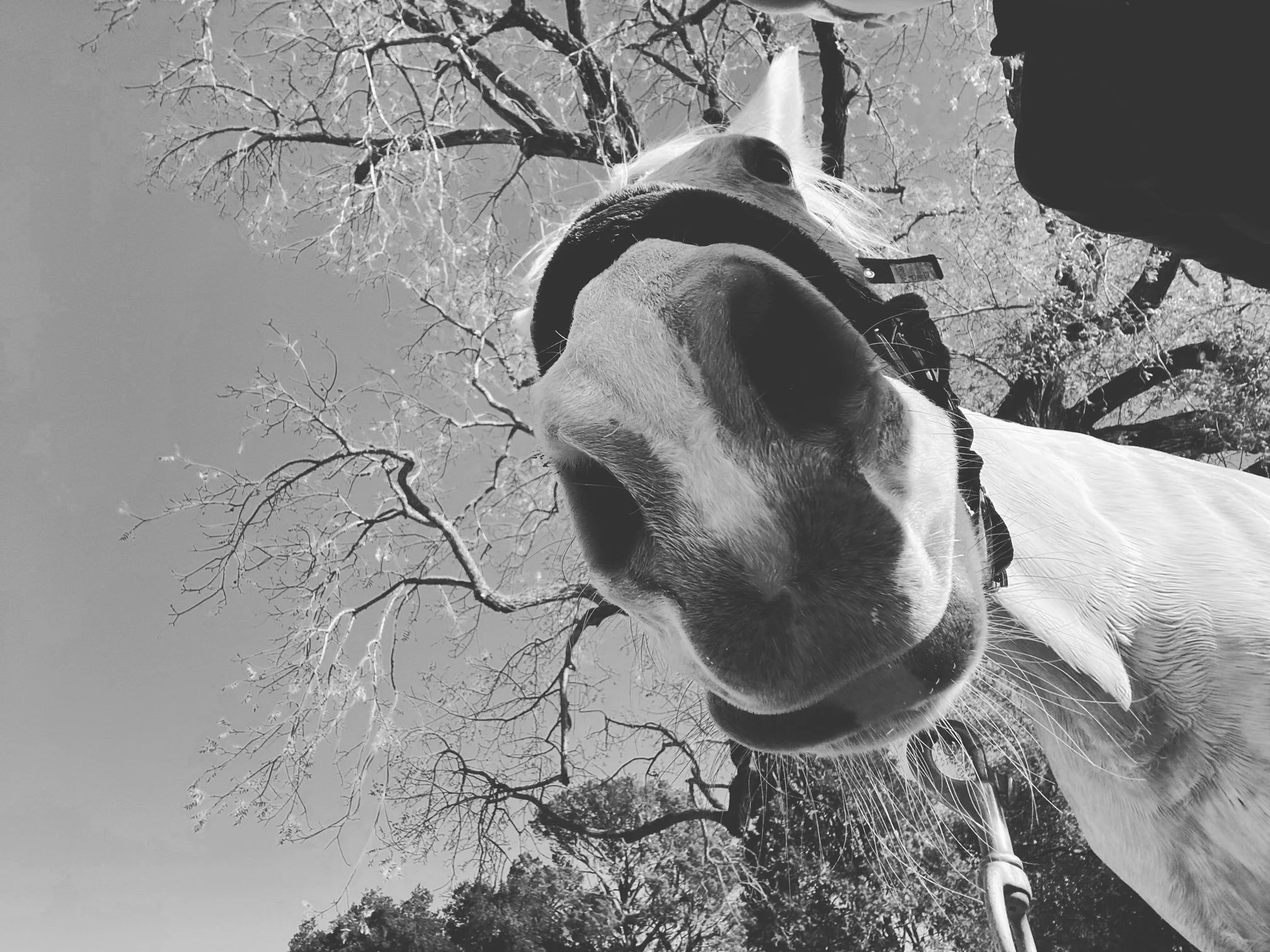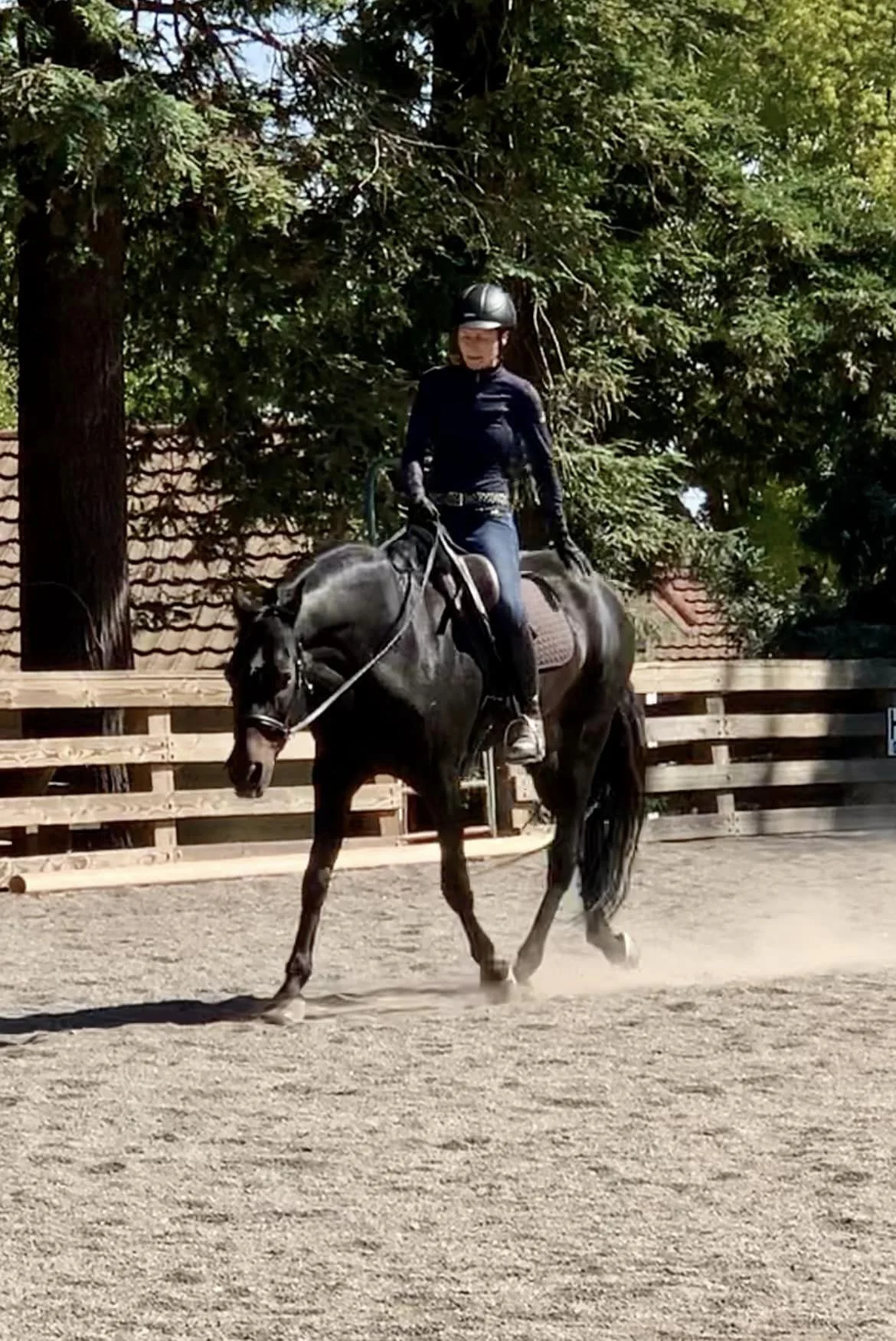What I'm Learning About Energy
Clearly, and this is not news, our energy affects not only how we respond to our environment but also how it, i.e. the living beings around us, respond to us. And it’s been well established that with horses, we need to be – at minimum – in a calm state of mind if we’re looking for meaningful and mutually beneficial interactions.
But apparently, that’s not even scratching the surface. Some amazing trainers such as Warwick Schiller report that after starting to work through his own issues in therapy and taking up meditation etc., horses respond differently to him. Tristan Tucker (TRT Method) said that he, I’m paraphrasing, ‘goes into a different state’ when he’s around hoses. Mark Rashid has long been talking about how his practice of Aikido translates to heightened awareness. Jessica von Bredow-Werndl starts her mornings with yoga and gratitude journaling…
So when I had the chance to audit a Dr. Susan Fay clinic locally, I jumped on it. She is the author of the book “Sacred Spaces” and was propelled to fame by being featured on Warwick Schiller’s podcast. The book is about the science and spiritual practice of tapping into the energy field to communicate with our horses. She focuses on a particular way of breathing and different energy frequencies (i.e. gratitude or comfort or soft confidence…). There is also a visualization component.
If there is one major takeaway from this day, energy is real and you need to learn to use it properly. You can cause serious harm, even with the best of intentions, when you don’t know what you’re doing. So please don’t walk up to someone’s horse and “do the bladder Meridian” thingy you saw on some video.
While I learned a lot about breathing and how she uses energy for communication, I also learned that her particular approach to training wasn’t one I would adopt. For one, I believe that the evidence for the role of CAT-H (Constructional Approach Training for Horses) and going even one step further, releasing pressure at the slightest sign of resistance or concern (you can read more about the three forms of pressure release on Sarah Schlote’s blog here) in creating trust and connection – and ultimately a horse who can regulate his own nervous system, is incredibly strong. When I saw how she approached teaching a mare to back up with energy, I asked her about her take on CAT-H. She was pretty clear that she wasn’t a fan because in her view, it didn’t work and created horses unprepared to deal with life, which happens to consist of thresholds. Also, to a lesser extend, she is anti R+, i.e. never uses treats, and to me, positive reinforcement is just one more good tool in the toolbox. To be fair, she does use “energetic cookies” as a thank you to the horse.
As I’ve started a bit of a mindfulness or awareness journey myself, I’ve noticed that one horse in particular responded to my – if only mildly altered state at this point – by seemingly beginning to process old trauma whenever I went to get him. I spend hours waiting for him to go through one “lick and chew cycle” (sympathetic nervous system activation [fight, flight or freeze] and returning back to parasympathetic [rest and digest]) after the other. Sometimes he seemed to get stuck in them. Learning about different energy frequencies allowed me to problem solve here and approach this horse in a more playful energy so that I can still get to the training part. (Of course I still allow him to complete these cycles any time they occur during training, this just appeared to be unrelated to anything currently happening around this horse).
I’ve also played a bit with visualization or mental images with some beginner’s luck, but I really feel like someone who just learned two words of Spanish and is now going around saying “Hola, amigo!”
Something both Warwick Schiller and Dr. Susan Fay talk about a lot is the idea of having “no expectation.” And that’s sometimes a bit hard to reconcile when the whole idea of training is getting your horse to do X or Y or Z. But when you have an expectation, your response to your horse NOT doing the thing is not going to be indifferent. There is going to be attachment to a timeline or a certain way things need to unfold. And that’s what gets us in trouble. Expectations are palpable. Consent based training is allowing the horse to say no, but putting in the work in the relationship (and cleaning up our messy human busy-brain energy) AND explaining everything logically in mini-steps so that the horse will ultimately give us “the thing.” And I mean “give” literally. That’s a gift. Don’t forget that.





